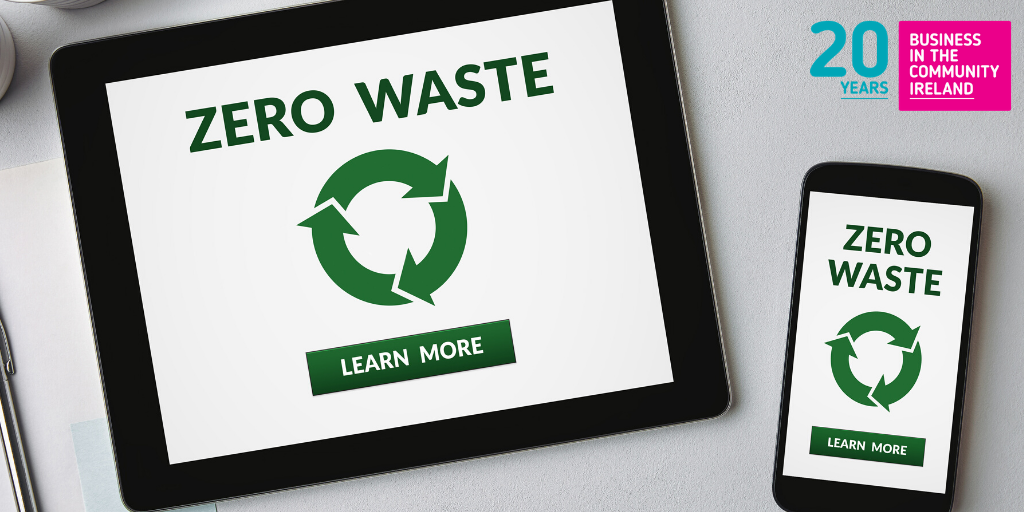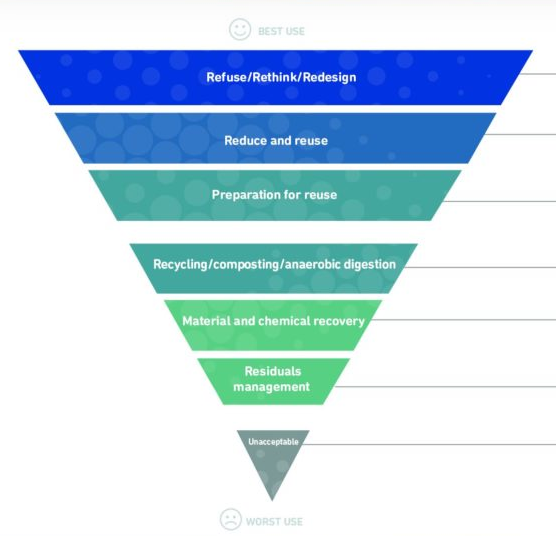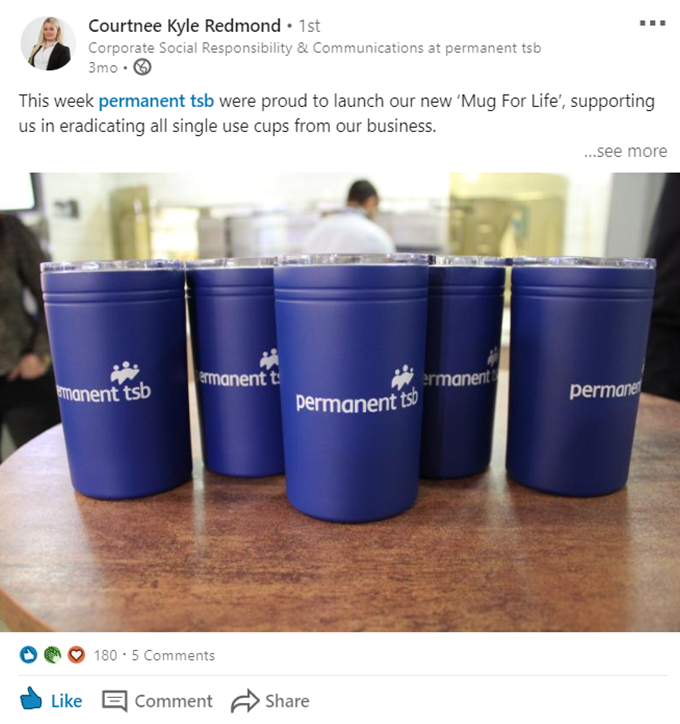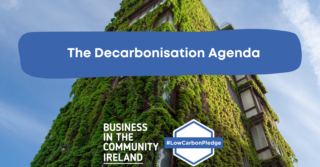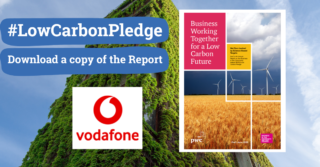5 Easy steps towards a Zero Waste Office
The topic of Zero Waste has been around for quite a while but lately it’s become particularly important, driven by the threat of the climate crisis and the amount of plastic in our oceans. Reducing waste has risen to the forefront of our environmental consciousness, but Zero Waste isn’t just about that. it goes beyond recycling and composting and end of life waste management to encompass the entire product lifecycle. From a carbon emissions perspective, the easiest waste to eliminate is the waste that was never generated. This is what Zero Waste means – it’s a proactive approach that begins with reducing the need to manage waste by preventing it in process (do you really need to print that email?) and design (utilising materials that preserve value, minimize environmental impacts, and conserve natural resources).
Zero Waste Europe has introduced a hierarchy with a few more layers than the traditional waste pyramid, incorporating Closed Loop design and recovery principles which are fundamental components of the Circular Economy.
Increasingly BITCI member companies are following Closed Loop product design principles to prevent waste (our upcoming Circular Economy event in April will highlight their efforts) but what if you’re not producing a product? What if you’re instead responsible for reducing waste costs in an office environment? Aiming for a Zero Waste office may be a way to achieve your goals.
BITCI’s Five “Easy” Steps toward a Zero Waste office
Step 1: Know Where You Stand
The first step in the process of becoming a Zero Waste office is to conduct an audit to understand the types of waste generated. From this you’ll be able to both reduce the inflow and more effectively manage the different outflows.
Categories of office waste include:
- Office paper and print waste (ink cartridges)
- WEEE and batteries
- bulk goods (office furniture)
- food and other wet waste (hand towels, contaminated food packaging)
- card board packaging and other dry waste (kitchen and toilet roll tubes, shipping boxes, rigid plastic bottles, glass, aluminium drinks cans).
The audit should seek to understand volumes of waste by category, percentage of waste versus recycling, and percentage of recycling contamination (which then becomes waste). Some waste providers will assist in conducting audits, as will some cleaning and catering services.
It’s important to understand the point at which recycling becomes contaminated so if possible, ensure that general office, kitchen, front of house and back of house canteen bins are audited individually in addition to obtaining the total waste and recycling volumes from the waste consolidation area. While you’re auditing, it might also be a good time to informally test employee awareness. Employee responses to questions about recycling behaviour will complement the data obtained in the audit.
Step 2: Lay the Foundation
The next step in the process of becoming a Zero Waste office is to utilise the audit findings to identify and prioritise corrective actions, mobilising expert resources to expedite change. Expert resources like Green Teams, waste collectors, Facilities, IT, catering and cleaning staff are critical to the Zero Waste office because they are aware of both the waste generated and the business case for reducing it. They can serve as champions and sources of deep knowledge to facilitate change. For example, if the audit uncovers high rates of recycling contamination, Green Teams can educate employees using references from Repak and other organisations, and then work with Facilities to monitor contamination on an ongoing basis to create more targeted educational campaigns.
Once resources are ready, then a plan can be developed. A good Zero Waste plan won’t just address problems that result from disposal, it will also seek to reduce waste coming into the office. Here are a few best practices focused on both reducing waste coming in and improving segregation to increase recycling and reduce the amount of residual waste. Implementing some or all of these best practices will create the right conditions for change.
Best Practices for Reducing Office Waste
- Remove individual desk bins, consolidating collection in common areas with labelled containers using example pictures and colour coding.
- Consider introducing compost bins in office kitchen areas to manage food waste. Note that not all tea bags are compostable. Some brands still use bags that contain small amounts of plastic and so we advise you to check with your waste company to see if they’ll accept tea bags for compost.
- Glass is another tricky issue for offices, both from a health and safety perspective and for waste collection. Some recyclers will take glass, some will not. If your collection company doesn’t accept glass, then consider using a specialty glass collection service.
- Switch opaque plastic collection bags with see-through colour coded waste stream bags (ex: black for general waste, blue or green for recycling and compostable bags for food waste) to allow the waste company to easily identify bags placed in incorrect central bins.
- If possible, replace all single use cups, plates and tableware with reusable versions and provide collection/washing facilities for used items in office kitchens and other common areas. If that’s not possible then use compostable versions.
- Reduce or eliminate single serve packaged items in vending machines, office kitchens and canteens by introducing dispensers and refillable containers. These include gravity bins for dry goods like cereals and snacks, dispensers for drinks and condiments, and jars and shakers for coffee, tea, and sugar.
- Company branded promotional materials can be a significant source of waste. Consider reducing or eliminating paper brochures and leaflets, plastic pens, and other single use or non-recyclable items.
- Make Zero Waste training part of the new employee induction process.
Introducing these changes provides a great opportunity to communicate the Zero Waste aim to employees along with the findings from the baseline audit and to begin to educate employees on good practices. Here is guidance and printable posters from Repak, and a ‘Where to Recycle Almost Anything’ website by the Regional Waste Authorities. Now is also a good time to provide employees with a means to help reduce waste coming in by giving away Keep Cups and reusable water bottles. Engaging with employees at the beginning is critical for getting buy-in to the actions that follow.
Step 3: Implement and Adjust
The third step in the Zero Waste office process is to implement your plan of action. The plan will likely be focused primarily on creating the right conditions as mentioned above through changing waste generation and collection practices by educating employees, but might also include specialty training for catering, cleaning and other waste handling staff to help them spot and correct reoccurring issues.
To help everyone along, here are a few ideas to educate and engage employees:
- Temporarily place a “Is this recycling, compost or waste?” bin in common areas, allowing employees to dispose of items they’re not certain about. These items can then be used in future educational campaigns.
- For offices with canteens and kitchens, hold a “Cup and Cutlery Amnesty Day”, asking employees to tidy up their work spaces by turning in company owned mugs, glasses, and flatware that may have accumulated on (or in) desks.
- Hold office competitions (most waste reduced, lowest recycling contamination rate, most creative re-use of an office product, “Tidy Department”, etc.) rewarding individuals or departments who contribute most to the Zero Waste effort.
- See if your waste company will offer a recycling facility tour.
- Partner with local reuse charities (charity shops like SVP and Simon, Falling Fruit, FoodCloud, ReDiscovery Centre, Boomerang, ReCreate, Revamp, etc.) to sponsor an employee volunteering and engagement event.
Step 4: Communicate and Engage
As the plan is implemented, communicate the actions being taken in support of the overall Zero Waste office goal as well as the progress and impact seen thus far. Ask employees for additional suggestions, continue to mobilise Green Teams and other expert resources, and provide ongoing education through “food surplus” themed lunch & learns, competitions, and other in-person and virtual employee engagement platforms.
Step 5: Declare the New Normal
You’ve made it to the last step toward a Zero Waste office! By now you’ve implemented a stellar plan that has resulted in massive residual waste reductions. Recycling rates are up and contamination is down. Employees are proud to work in a Zero Waste office and are enthusiastically engaged in waste reduction efforts. You can now declare the new normal, but are you done? Unfortunately no. As focus shifts to new priorities the cups and tableware will start to accumulate in desks again if you don’t continue to draw employee attention to the Zero Waste goal and keep expert resources engaged in guiding the actions all employees will take to achieve it. Fortunately the effort required to sustain a Zero Waste office is significantly less than it takes to initially implement the plan. All it really needs is a little time and attention.
We will be celebrating Earth Day on the 22nd April by hosting a Circular Economy workshop for our members.
If you’d like additional advice in your transformation to a Zero Waste office, please contact your Account Manager. If you are not a member consider joining the movement for sustainable change.
Tags:
